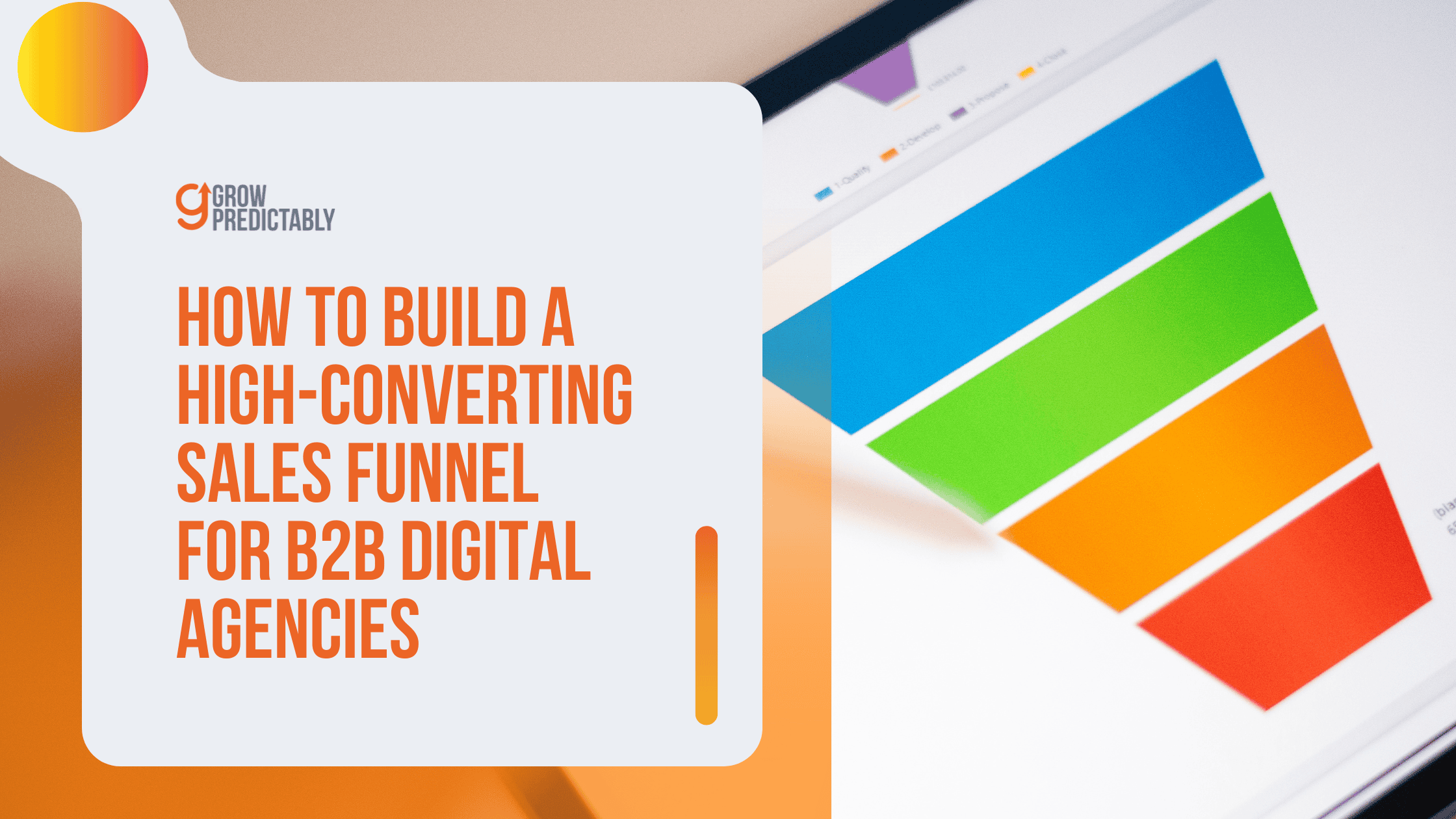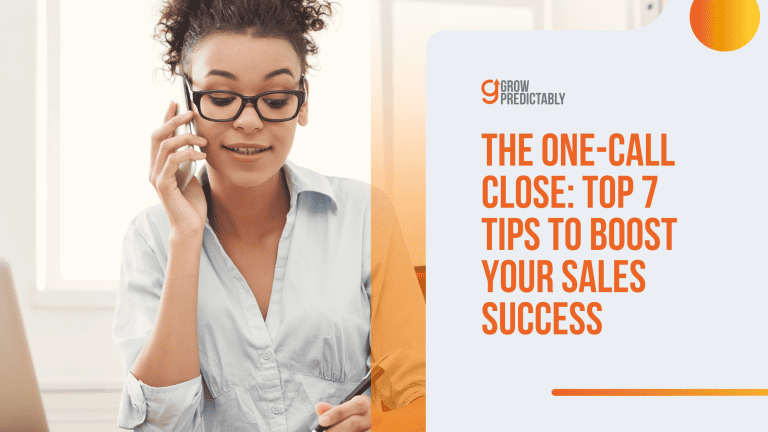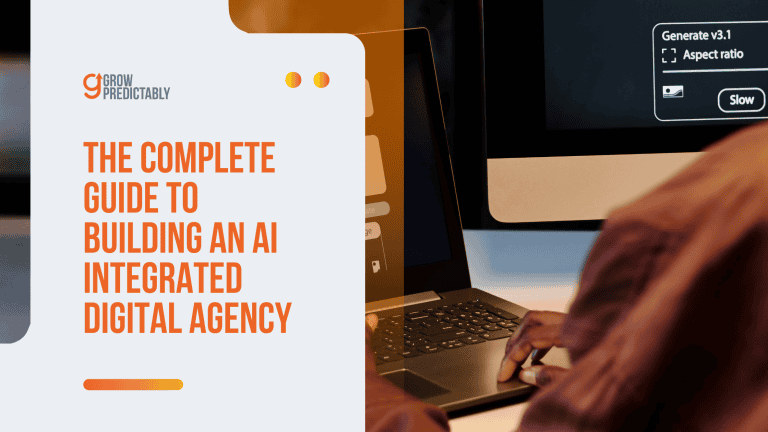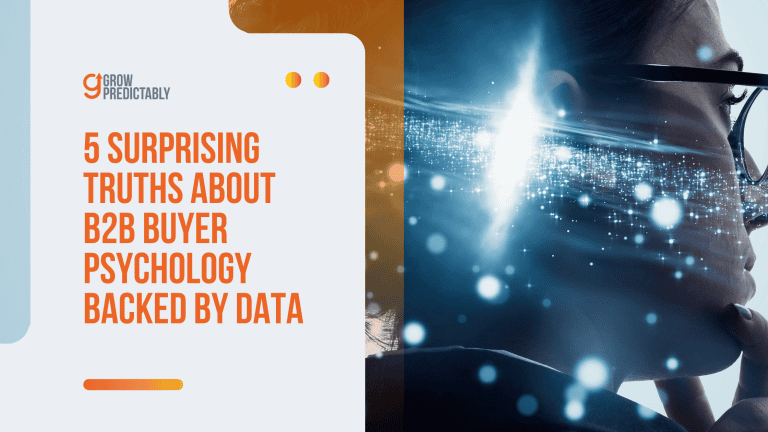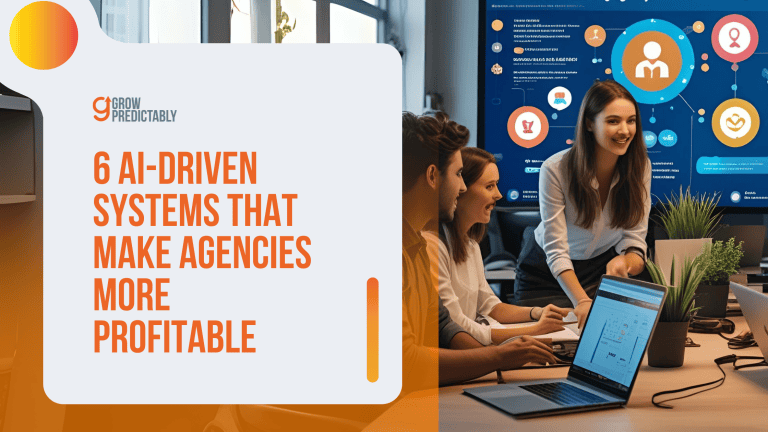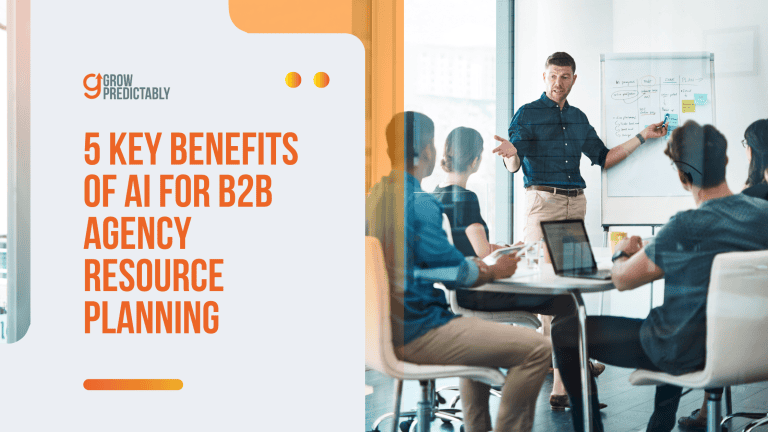How to Build a High-Converting Sales Funnel for B2B Digital Agencies
Here’s what I wish someone had told me when I was stuck with a broken B2B funnel.
It’s not your offer. It’s not your price.
It’s that your funnel is built backwards, focused on tactics instead of people.
Once I mapped every stakeholder’s pain point, content clicks turned into discovery calls fast.
You don’t need more leads—you need a better fit.
Let’s walk through the framework that changed how I close B2B deals.
Let’s get right into the steps that build a potent sales funnel for B2B digital agencies.
Step 1: Define Your Ideal Client and Map Their Buyer Journey
Why do most B2B sales funnels fail?
Because they’re aimed at the wrong people…
With a starting point like this, you’re already disrupting your b2b sales funnel and the entire business process.
Did you know that targeting the right Ideal Client Profile (ICP) can help marketing teams boost your B2B sales funnel conversion rates by up to 30%?
For B2B digital agency owners, creating a detailed ICP isn’t just nice to have—it’s your first step toward higher conversion rates.
Building It With Your Customer Avatar Canvas

Let’s break down how to build your ICP using a Customer Avatar Canvas:
1. Core Demographics & Role Identifiers
- Job titles (Head of Marketing, Procurement Manager)
- Company size and industry
- Budget authority level
- Tech stack familiarity
2. Pain Points & Triggers
- Project delays causing revenue loss
- Poor vendor communication
- Lack of measurable ROI
- Missed growth targets
3. Decision-Making Process
- Who initiates the search for services?
- Which stakeholders need to sign off?
- What’s their typical buying timeline?
- Key objections at each stage
Think of your ICP like a GPS for your marketing efforts, guiding the entire customer journey.
Without it, you’re burning fuel (your ad spend) driving in circles.
With it, you’re taking the fastest route to qualified leads.
Here’s something fascinating: B2B purchases typically involve 6-10 decision makers, each navigating their own buying journey.
Each one needs their own buyer’s journey map.
Your CMO might worry about ROI while your CTO focuses on integration complexity.
Mapping the Customer Journey
Map the customer journey across three key stages:
Awareness Stage:
“Tired of SEO campaigns that never rank?” – Target content to specific frustrations
“Struggling with marketing automation?” – Address pain points directly
Consideration Stage:
“Looking for an agency that understands enterprise martech?” – Speak to aspirations
“Want predictable lead generation?” – Focus on desired outcomes
Decision Stage:
- ROI calculators
- Case studies matching their industry
- Technical implementation roadmaps
Use your CRM (like HubSpot or Salesforce) to track engagement patterns.
When marketing teams sync avatar insights with CRM data, you’ll spot qualified leads within your target audience or potential customers faster and more accurately.
Ready to put your b2b sales funnel into action?
Ask yourself: “Which decision-maker does my funnel neglect today?”
Update your avatar and realign your content targeting strategy accordingly.
Remember, a precise ICP isn’t limiting—it’s liberating.
It helps you create content that resonates, ads that convert, and proposals that win.
What happens when you’ve nailed your ICP?
That’s what we’ll explore next as we dive into building awareness with targeted content in your b2b sales funnel.
Step 2: Build Awareness with Targeted Content and Outreach
Majority of B2B buyers fully define their needs before they even talk to a vendor.
That’s why your top-of-funnel game needs to be spot-on if you want to catch their eye early.
Let’s break down the marketing tactics needed during the awareness stage to grab attention and start meaningful conversations with your perfect clients.
Why Your TOFU Strategy Matters

When you match your content perfectly to what your ideal clients need, your lead conversion rates jump up.
Think about it – you can boost the results just by speaking directly to the right people!
Here’s how sales and marketing teams can do that during the awareness stage and interest stage:
1. SEO-Smart Blog Posts
Create content that answers specific questions your decision-makers are asking:
- “How to Write an Effective Web Development RFP”
- “Enterprise SEO Budget Planning Guide”
- “Marketing Agency Selection Criteria Checklist”
2. LinkedIn Thought Leadership
Share your expertise where your clients hang out:
- Quick-tip videos about industry trends
- Comment thoughtfully on CMO posts
- Share client success stories (with permission)
3. Smart Email Campaigns
Focus on solving problems your target audience face:
- Send case studies showing real results
- Share industry insights they can’t find elsewhere
- Offer quick wins that they can implement today
Lead Magnets That Work
Want to turn visitors into leads?
Try these proven downloads:
- “Website Optimization Checklist for CMOs”
- “Agency ROI Calculator” (helps them justify their investment)
- “Digital Marketing Budget Planning Template”
What’s Working Best Right Now?
Here’s what’s converting for B2B agencies:
- Downloadable checklists
- Live webinars
- SEO-optimized blog posts
Still pushing out general blog posts hoping something sticks?
Time to switch gears.
Pick one piece of content, like social media ads or their lead magnets, that you can optimize for your ideal client profile today.
But getting attention from prospective customers is just the beginning of your b2b sales funnel – what happens once you’ve got their interest?
Let’s explore that next…
Step 3: Engage and Educate Prospective Customers During Consideration Stage
For one agency that I’ve gotten the chance to work with, smarter education and not more emails throughout the b2b sales funnel helped slash sales cycle by 40%.
That’s the power of strategic mid-funnel engagement.
When prospects hit your consideration stage, they’re hungry for proof, not pitches, making it crucial for both a sales and marketing team to educate potential customers effectively.
Let’s dive into how you can turn interest into intent, especially during those lengthy B2B buying cycles where multiple decision-makers need convincing.
Your Mid-Funnel Content Arsenal
Think of your content like a buffet—each piece needs to satisfy a different appetite for information:
- Whitepapers: Create deep-dive resources that speak directly to your potential buyer’s role. “Scaling SEO for Enterprise: Budgeting & ROI Guide” works because it tackles both strategic and financial concerns head-on.
- Case Studies: Skip the fluff and focus on measurable wins. “How We Cut a Client’s CPL by 35% in 60 Days” grabs attention because it’s specific and time-bound. Break down exactly how you achieved those results—this transparency builds credibility fast.
- Interactive Tools: Build ROI calculators comparing in-house versus outsourced costs. When prospective customers or potential buyers can plug in their numbers and see potential savings, you’re not selling anymore—they’re selling themselves.
Smart Sequencing Wins the Day
Here’s where many agencies drop the ball: throwing content at potential buyers without strategy.
Instead, try this approach:
- Week 1: Send industry-specific whitepaper
- Week 2: Follow up with relevant case study
- Week 3: Share ROI calculator
- Week 4: Invite to solution demo
Using tools like HubSpot or ActiveCampaign, you can automate this sequence while personalizing it for each decision-maker.
This targeted approach has shown to boost MQL to SQL conversion rates by up to 25%.
Handling Objections Before They Surface
Got a web development service?
Don’t wait for prospects to ask about platform compatibility.
Create a quick demo video showing your integrations in action.
This proactive approach builds confidence and speeds up decision-making.
Your Next Steps:
- Audit your current mid-funnel content
- Map each piece to specific stakeholder needs
- Set up automated but personalized delivery
- Track engagement to spot sales-ready signals
What if your funnel could pre-close the deal before you ever talk to the client?
You’ll see how that works as we transition to the next stage in the following section.
Step 4: Convert Leads to Clients with Tailored Sales Processes
Let me show you how to turn interested prospects and potential customers into excited clients.
Getting that final “yes” isn’t about pushing harder – it’s about making the decision easier for every stakeholder involved.
Drawing from my experience helping agencies scale their sales processes, here’s your roadmap to higher conversion rates:
1. Pain-Point Proposals That Speak Their Language
- Quote their exact words from discovery calls in your proposals.
- Mirror the CMO’s objectives in your executive summary.
- Frame solutions around their specific challenges.
For example, instead of “We offer SEO services,” your sales team could go with “Based on your goal of increasing organic traffic by 50%, here’s our 90-day SEO acceleration plan…”
2. Smart Stakeholder Management
Using tools like HubSpot helps you:
- Track each decision maker’s specific concerns.
- Monitor individual stakeholder engagement.
- Time follow-ups based on their internal process.
3. Risk-Reducing Offer Structures
Break down big commitments into digestible steps:
- Pilot programs (90-day proof of concept).
- Phased implementation plans.
- Clear success metrics for each stage.
Strategic Follow-Up Framework:
- Post-demo: Send a video summary highlighting key discussion points.
- Decision stage: Share a mutual action plan showing clear next steps.
- Final stage: Deliver a recorded proposal walkthrough.
Don’t forget, every stakeholder needs different ammunition to champion your proposal internally.
Give them what they need to say “yes” confidently.
Rushing into your sales cycles barely works for anyone when it comes to B2B businesses, stressing the need to align marketing more effectively.
Instead, focus on arming each stakeholder with exactly what they need to move forward confidently.
Your job isn’t to push for a quick close, but to make saying “yes” the obvious choice.
Think about this: What if you could pre-close your next deal before the final meeting?
That’s exactly what we’ll explore in the next section on client retention and upselling.
Section 5: Retain and Upsell Clients to Build Long-Term Relationships
Did you earn a client—or win recurring revenue?
That’s the million-dollar question smart agencies ask themselves whenever they gain new customers. Why?
Because signing new customers is just the start of your real growth opportunity.
When you nail your retention and upsell strategy, one client can turn into five signed contracts over time.
Let’s break down how to make this happen.
Start Strong with Strategic Onboarding
Your first 30 days set the tone for everything.
Here’s your power play:
- Create instant wins with clear, measurable results in month one
- Schedule weekly or bi-weekly check-ins to keep everyone aligned
- Document expectations tied to specific key performance indicators from your contract
Think of onboarding like planting a garden—an essential step to convert potential customers.
The care you give early on determines how well it grows.
Turn Growth Into More Growth
By day 90, you should be spotting natural upsell opportunities.
Look for:
- Pain points that surface during project work
- Services clients mention wanting “someday”
- Areas where they’re hitting their goals faster than expected
One smart move?
Schedule “roadmap reviews” at the 90-day mark.
When conducting a roadmap review, start by meeting with your client to go over the project’s successes and current standing.
Highlight achievements and reflect on how those align with their goals.
Engage the client by asking about their future aspirations, and identify any evolving needs or challenges.
Leverage this information to suggest tailored solutions or services you can provide, seamlessly tying them into their growth trajectory.
This collaborative conversation not only showcases progress but also naturally elevates their customer journey with additional support.
This is your chance to show progress and naturally introduce new ways to help.
Build Your Advocacy Engine
To build your advocacy engine, identify and focus on your hot leads and existing customers.
Happy clients and existing customers become your best salespeople when you:
- Track NPS scores (aim for 8+) from potential customers
- Watch for unprompted referrals
- Notice increased engagement with your content
Make it easy for clients to spread the word:
- Feature their wins in your LinkedIn content
- Send thoughtful gifts at project milestones
- Run quarterly business reviews that showcase real results
Real-World Win
Picture this: An agency I worked with boosted their total revenue by 30% in just 12 months.
Their secret?
They started doing structured quarterly business reviews and offered performance bonuses for long-term contracts.
Clients loved seeing their progress tracked clearly, and the agency earned more long-term commitments.
Your Next Steps
- Download our B2B client onboarding checklist [Link]
- Grab the monthly reporting template aligned to funnel KPIs [Link]
- Pick one retention tactic to implement this week
Remember: Customer satisfaction is nice, but revenue amplification is better.
Start with rock-solid onboarding and watch your client relationships—and revenue—grow.
Ready to turn your next client into five?
Start by nailing your onboarding process.
Your future self will thank you.
Step 6: Use Technology to Automate and Optimize Your Sales Funnel
Have your sales team ever wondered if your technology stack could do the heavy lifting, bringing in more business, and still close like a human?
Imagine this scenario: Your sales team or marketing team is juggling dozens of leads, each at different stages, needing different touches.
Without the right tech setup, you’re probably missing golden opportunities.
I’ve seen firsthand how smart automation can transform a struggling funnel into a conversion machine.
Now, let’s break down exactly how to make technology work for you at every stage.
Your Tech Foundation: Marketing Teams Choosing the Right CRM
Your Tech Foundation: Choosing the Right CRM
Different CRMs shine in different scenarios:
| Platform | Features | Best For |
|---|---|---|
| HubSpot | ✓ Perfect for content-heavy funnels ✓ Strong automation for lead nurturing ✓ Built-in SEO and content tools | Agencies focusing on inbound marketing |
| Salesforce | ✓ Deep customization options ✓ Robust reporting capabilities ✓ Enterprise-grade features | Larger agencies with complex sales processes |
| Pipedrive | ✓ Visual pipeline management ✓ User-friendly interface ✓ Quick setup time | Smaller agencies needing simplicity |
Smart Automation By Funnel Stage:
Having automation at your disposal is a first step, but you still have to make the right maneuvers to streamline this integration in your marketing process.
Here’s how to implement automation to refine your digital marketing campaigns at different funnel stages:
1. Early-Stage Lead Qualification
- Set up AI chatbots to ask qualifying questions (E.g. “What’s your current monthly ad spend?”)
- Route qualified leads to sales team instantly
2. Middle Funnel Nurturing
- Trigger personalized content based on behavior
- Schedule automated follow-ups
- Track engagement scores
3. Bottom Funnel Conversion
- Send automated meeting reminders
- Create proposal delivery workflows
- Track document opens and interactions
Here’s a real-world win: One agency I worked with cut their lead response time from 12 hours to 5 minutes using chatbot qualification.
Their MQL to SQL conversion jumped 18% in just 30 days.
The Human Touch Balance
Remember: Automation supports, not replaces.
This mindset toward AI and automation is what helps optimize your marketing process on the right track.
Use tech to:
- Handle repetitive tasks
- Flag high-intent behaviors
- Time human outreach perfectly
- Diversify sales channels
But to take it to the next stage, keep it personal when:
- Responding to specific questions
- Handling objections
- Discussing proposals
- Building relationships
Knowing where to let AI do its thing and where to take over is critical to maximizing AI without losing the value and heart in your service.
Remember, an effective sales funnel is one that’s designed to bring the best value at the best time.
That’s not something you can just totally leave to AI.
Just like what this one quotes says.
“Being a human in the loop means embracing the idea that generative AI is a tool, and because it is a tool, we have agency over it.”
Eric Hudson
Quick Wins You Can Implement Today:
- Set up lead scoring in your CRM
- Create automated meeting reminder sequences
- Build a basic chatbot for initial qualifying
- Connect your proposal tool to your CRM
Where does your funnel leak most?
Let your data—and your tools—answer that.
Start by picking one stage to automate this week.
Remember: The goal isn’t to remove the human element in your digital marketing campaigns—it’s to make your team more effective by letting technology handle the routine while you focus on relationships.
Step 7: Troubleshooting Common Sales Funnel Challenges
Still not seeing conversions rise?
Let’s diagnose the usual suspects.
Every funnel hits snags, but knowing what to look for makes fixing them much easier.
Think of this as your funnel first-aid kit – quick fixes for common conversion wounds.
Low Lead Quality
When your leads just aren’t biting, look at your targeting.
Are you fishing in the right pond? Review your Ideal Client Profile (ICP) and check if your content matches their needs.
Try this fix: Pick your top 3 clients and map what they have in common. Use those traits to sharpen your targeting.
Dragging Sales Cycles
If deals move slower than a snail, you might need better proposal tools.
Create deadline-driven calls to action like “Book your review call by Friday to lock in Q1 pricing,” ensuring marketing teams provide clear timelines to prospective clients.
This one example from Mailchimp is an example often overlooked because of how common it is.

Here’s another example from ZBiotics, with a more straightforward time limit on the offering.

Speed things up with video proposals – they’re more engaging than plain documents and help build trust faster.
The MQL to SQL Drop-off
This one hurts! If quality leads ghost you after showing interest, your sales reps need to tighten up your nurture game.
Use lead scoring to help sales reps focus on identifying and nurturing hot leads, ensuring high-intent prospects are prioritized.
Give each action points: downloading a guide might be 5 points, watching a demo video could be 10.
Once they hit 25 points, that’s your signal to reach out personally.
Proposal Problems
When proposals keep hitting walls, mix up your formats. Some clients love spreadsheets, others need visuals.
Create an interactive pricing page where prospects can play with options, just like what you’ll see from Ghost’s pricing page.
Ghost employs a tiered pricing model with an innovative interactive slider that adjusts pricing based on how much a business grows.

As users move the slider, the price on each plan changes dynamically, clearly demonstrating Ghost’s value proposition.
You can also include video walkthroughs explaining your approach in your landing page – it’s like giving them a test drive of working with you.
Poor Client Retention
New clients slipping away? The fix starts with day one.
Create clear 30-day value checkpoints.
What wins can you show in the first month? Map these out before they sign and track progress religiously.
Happy clients stick around.
Quick-Fix Action Steps:
- Pull up last quarter’s numbers
- Find your biggest leak
- Pick one fix from above
- Test it for 2 weeks
- Track the change
Remember: The best fix is the one you actually implement.
Pick your most painful funnel leak and tackle it this week.
You don’t need to fix everything at once – start with what’s costing you the most money right now.
Want to know if your fix worked?
Watch these numbers:
- Lead quality: Check sales call conversion rates
- Sales cycles: Track days from first contact to close
- MQL to SQL: Monitor qualification-to-meeting ratio
- Proposals: Look at proposal-to-close percentage
- Retention: Calculate average client lifetime value
Which leak is draining your funnel most?
Make that your optimization focus this week.
Sometimes the smallest fix makes the biggest impact.
FAQs
Precision = Profit
Each section of this guide proves that doing less—but targeting better—can yield more.
When you define your Ideal Client, walk in their shoes through each stage of the funnel, and offer timely, relevant content, your sales team won’t have to push—they’ll just guide.
Think about how much more effective your team could be with fewer unqualified leads and more enthusiastic buyers.
That’s the power of a complete, personalized customer journey.
Your call to action? Don’t let this article collect digital dust.
- Download the Buyer Persona Canvas and start filling in real data from your last 10 deals.
- Update your CRM workflows to reflect those personas.
For next steps, check out:
- HubSpot’s free CRM tools for outreach automation
- Our Objection Response Guide in the resource section
- A subscription to Growth Tools for weekly AI-powered funnel prompts
Here’s something worth reflecting on: If your funnel could talk, what would it say about how well you understand your buyer?
When you align your systems with your clients, their loyalty follows.
That’s not a sales trick—it’s a growth strategy.

